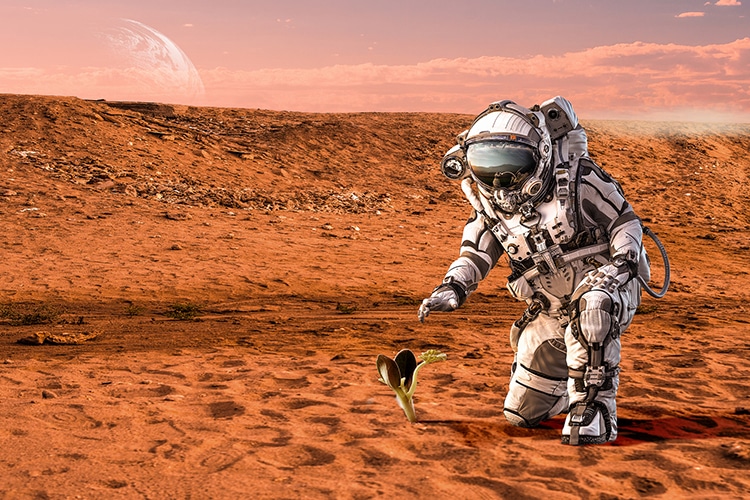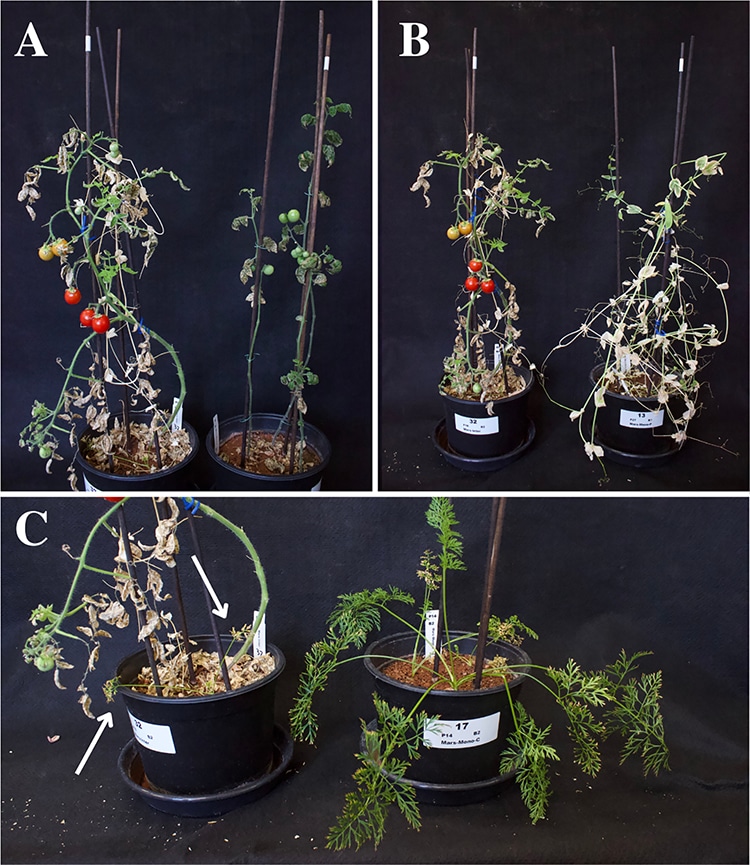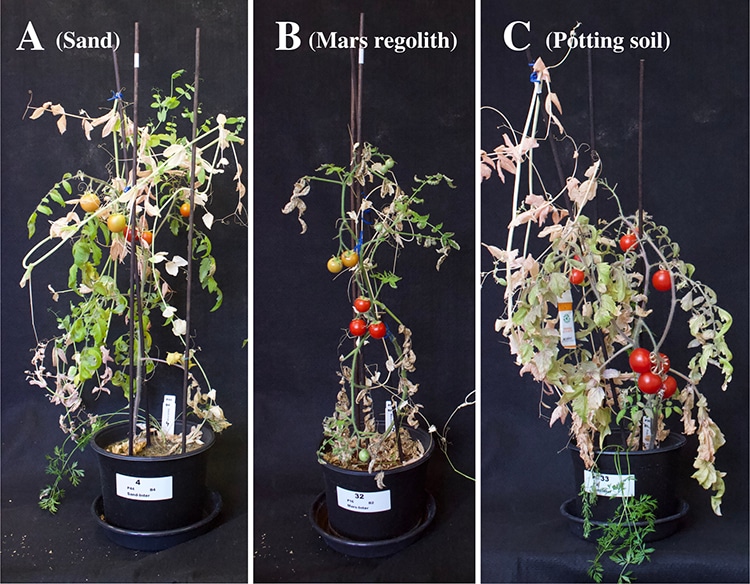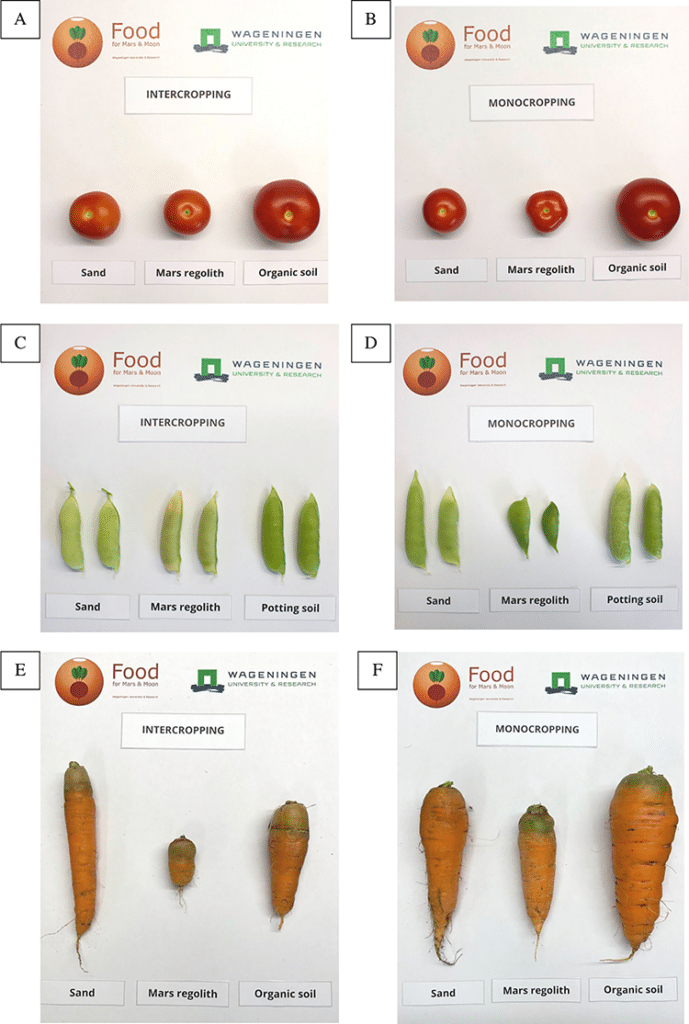Photo: SergeyNivens/Depositphotos
Humans visitingMarswill likely happen within the next 15 years.
However, it will be a nine-month-long journey one way.
Finding a way to feed humans onMarsis, therefore, critical before anyone steps foot on the Red Planet.

Photo: SergeyNivens/Depositphotos
Regular supply missions are not efficient economically, leaving agriculture as the best method to feed Mars-bound humans.
Building upon past studies, scientists at Wageningen University & Research are looking for ways to optimize plant growth.
Centuries ago, Mayans started using a method of farming which involved intercropping.

Comparison between intercropping and monocropping treatments in Mars regolith simulant.A: Intercropping treatment (left) and monocropped tomato (right). B: Intercropping treatment (left) and monocropped pea (right). C: Intercropping treatment (left) and monocropped carrot (right). Arrows point to the small carrot leaves from the intercropping treatment. Pictures were taken on the day of harvest (day 105). (Photo: Gonçalves et al. /Plos One,CC BY 4.0)
Their descendants still use this method today, resulting in drought and disease resilient farms.
Tomatoes, carrots, and peas were grown for 105 days.
These three vegetables are high in nutrients that are destroyed during food dehydration.

Comparison between intercropping treatment from the three soils.A: Sand. B: Mars regolith simulant. C: Potting soil.(Photo: Gonçalves et al. /Plos One,CC BY 4.0)
Also the researchers believed they would be complementary to each other.
Carrots, in turn, help aerate soil, thus improving water and nutrient uptake.
There were 60 pots total of plants, in greenhouses similar to what would be built on Mars.

Yield comparison between cropping treatments and between soils.Labels in pictures indicating “Organic soil” refer to the potting soil treatment. A: Intercropped tomato. B: Monocropped tomato. C: Intercropped peas. D: Monocropped peas. E: Intercropped carrots. F: Intercropped carrots. (Photo: Gonçalves et al. /Plos One,CC BY 4.0)
The results were then measured in terms of yield and nutrient density.
In all three soil types, all the crops grew.
Tomatoes did especially well in the intercropping regolith pot.
There are several possible reasons for this.
Tomatoes are known as heavy feeders likely taking nutrients from the peas and carrots.
The study also provided evidence that intercropping would be beneficial to agriculture on Earth as well.
With a rapidly changing climate, farming conditions are shifting, and soil is becoming sandier in some places.
The intercropped plants did better in the river sand iteration than the monocropped pots.
Not just astronauts on Mars, but many communities on Earth have plenty to learn from the Mayans.
B: Intercropping treatment (left) and monocropped pea (right).
C: Intercropping treatment (left) and monocropped carrot (right).
Arrows point to the small carrot leaves from the intercropping treatment.
Pictures were taken on the day of harvest (day 105).
(Photo: Goncalves et al.
Comparison between intercropping treatment from the three soils.A: Sand.
B: Mars regolith simulant.
C: Potting soil.
(Photo: Goncalves et al.
A: Intercropped tomato.
B: Monocropped tomato.
C: Intercropped peas.
D: Monocropped peas.
E: Intercropped carrots.
F: Intercropped carrots.
(Photo: Goncalves et al.